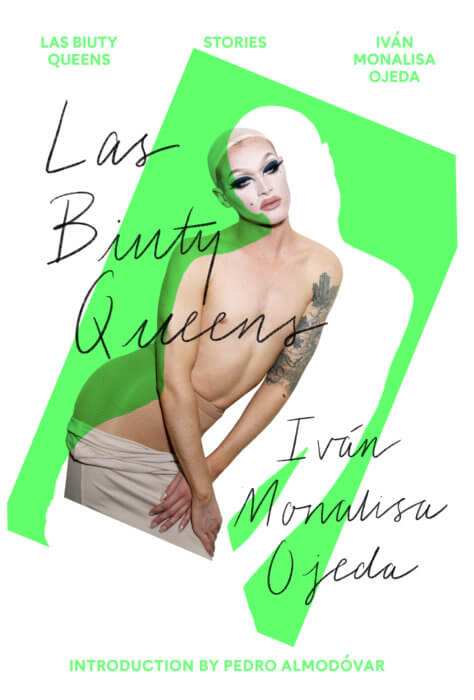The Latinx immigrant and trans performer Iván Monalisa Ojeda’s “Las Biuty Queens” is a dazzling collection of stories based in part on his/her life. The slim volume can be read in one sitting, but most readers will want to consume these bonbons slowly because they are so rich and delicious.
The book features an introduction from no less than Pedro Almodóvar, who acknowledges these stories about transgender and queer people are about solidarity, but also about “survival in the face of Trump’s administration.”
Monalisa, as he/she is known throughout the book, immerses readers in his/her world, walking 14th street around Ninth Avenue, or hanging out in apartments in the Bronx or Washington Heights. The stories come to life through the details, like the pigeons on a windowsill that lead to a character having a memory about making dove stew back in the Dominican Republic.
In arguably the best story, “In the Bote,” Monalisa recounts his/her experiences being collared after asking an undercover cop for a ride. The arrest, unfortunately, was made during a time when Monalisa had three guarantees, which prompts the judge to send him off to Rikers for three months unless $5,000 bail is paid. The description of the entire bureaucratic process — from getting in the police van to walking the Tombs (an underground section of Central Booking) to Monalisa’s first night in “La Rocas” (as Rikers is dubbed) — is vividly rendered. But so too, is Monalisa’s attitude. He has not washed in three days and basks in the three “enjoyable” minutes of a shower before finding a bed and getting a blanket through the kindness of other inmates. Monalisa also learns some of the rules of conduct in jail, and how he processes the experience as he befriends Vladimir, a Chilean, like himself/herself.

Monalisa injects a sense of humor in every story. Sometimes it can be catty, like when Monalisa is teased about “forgetting” to charge a client when he goes to work horny. In “Ortiz Funeral Home” there is a kerfuffle when someone is accused of stealing the vial of coke that was left in the deceased’s coffin. The atmosphere at this wake is such that Monalisa is afraid to look at the corpse, but when he/she does, it is “roaring with laughter.” The gallows humor is endearing.
“Las Biuty Queens” is also full of fabulous turns of phrases. The author opens a story about his/her friend Adriana de Pereira, with the lines, “It’s time to pay rent and my wallet is beyond hungry.” She/he later describes himself/herself as “a nocturnal urban geisha.” The tales also include superstitions, such as one from Colombia, which claims that, “When a whore finds an abandoned mattress while she’s working, she has to get onto it and jump around. It brings you money.” And so Monalisa and his/her friend climb and jump — in heels, no less — to induce a windfall. And anyone who saw the documentary “Mucho Mucho Amor,” will appreciate Monalisa namedropping Walter Mercado here.
A story “A Coffee Cup Reading,” where he needs reassurance that a boyfriend will call back, pulsates with nervous energy. Monalisa masterfully creates a sense of urgency in the moment, with magnified feelings about the taste of a glass of cool water, or the cup of coffee that she sips in anticipation of his/her reading. The thinly veiled politeness seems genuine, but it also doubles as a mask covering Monalisa’s fears and anxieties.
While the author does not experiment too much with narrative form, that actually works in the book’s favor. Some of the stories feel like Monalisa could be sitting in a bar, recounting them to the reader as if over a drink. Two tales —the opening entry, “Overdose,” about Monalisa’s addiction to crystal meth, and the title story, which is told to a mirror — feel more like confessionals. Two stories, “The Boricua’s Blunts” and “Lorena the Chilena,” are perhaps the most poignant as they wistfully recall people in Monalisa’s life who are now gone.
The difficulties Monalisa and his/her friends experience come across throughout “Las Biuty Queens,” but despite the hardships they encounter — such as a friend who is jilted on her wedding day, or Diana, who recounts a story of childhood abuse — the friends all find ways of celebrating. They borrow money, cigarettes, and drugs from one another, which reinforces their sense of community and struggle. The camaraderie on the page is infectious and will make readers want to spend more time with these “biuty queens.”
It is a shame that Monalisa’s collection is so short, because one knows from reading these pages, that he/she has many more great stories to tell.



































